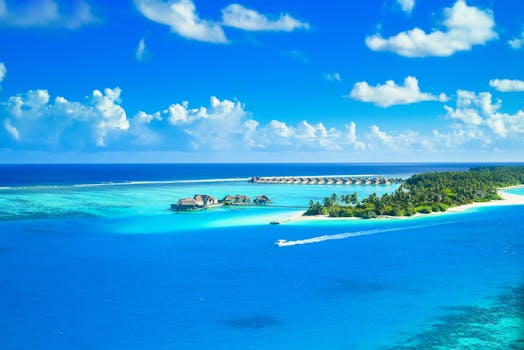When to Visit Thailand
Thailand, often referred to as the "Land of Smiles," is a destination that captivates travelers with its stunning landscapes, rich cultural heritage, and diverse experiences. This Southeast Asian gem offers everything from pristine beaches and bustling cities to ancient temples and lush jungles. But determining the best time to visit can be a challenge, as Thailand’s weather, festivals, and regional attractions vary throughout the year. With its distinct seasons and vibrant local traditions, understanding when to plan your trip is essential for making the most of
Understanding Thailand’s Seasons
Thailand has a tropical climate divided into three main seasons: the cool season, the hot season, and the rainy season. Each period offers unique opportunities for exploration and enjoyment, depending on your preferences and travel plans.
The cool season, lasting from November to February, is generally considered the best time to visit. Temperatures are more moderate, ranging from 20°C to 30°C (68°F to 86°F), making it ideal for outdoor activities such as hiking or exploring historical sites like Ayutthaya and Sukhothai. The northern regions of Chiang Mai and Chiang Rai are particularly pleasant during this time, offering cool breezes and a vibrant atmosphere.
March to May marks Thailand’s hot season when temperatures can soar above 35°C (95°F) in many areas. While the heat might be intense for some travelers, this period is perfect for enjoying Thailand’s beaches and islands. Coastal destinations like Phuket, Krabi, and Koh Samui are at their finest during this time, with calm waters and sunny skies.
The rainy season stretches from June to October, characterized by frequent downpours and higher humidity levels. While it may not seem like an ideal time to visit, there are advantages to traveling during this period. The countryside comes alive with lush greenery, and tourist attractions are less crowded. Accommodations are often more affordable due to lower demand. For those looking to explore without the crowds, destinations like Kanchanaburi or Koh Chang can be rewarding during the rainy months.
Festival Highlights Throughout the Year
Thailand’s cultural calendar is packed with festivals that showcase its rich heritage and lively spirit. Timing your visit around these events can add a memorable dimension to your trip.
- Loy Krathong (November): This festival of lights occurs during the cool season and involves floating decorated baskets on water bodies as a symbolic act of releasing negativity. Cities like Chiang Mai host grand celebrations with lantern releases that illuminate the night sky.
- Songkran (April): Celebrated as the Thai New Year, Songkran is a nationwide water festival where locals and tourists engage in spirited water fights. It’s an exciting way to experience Thailand's festive energy but be prepared to get wet!
- Vegetarian Festival (October): Held primarily in Phuket and other southern provinces, this nine-day event features colorful parades, traditional rituals, and an emphasis on vegetarian food offerings.

Other notable festivals include the Phi Ta Khon ghost festival in Loei Province during June or July and the Yi Peng Lantern Festival in Chiang Mai that coincides with Loy Krathong.
Regional Considerations: North vs. South
The diverse terrain of Thailand greatly influences the best times to explore different areas. The northern highlands have a cooler climate compared to the southern coastal areas. This distinction can influence your itinerary depending on your interests.
If you’re drawn to cultural experiences and mountainous landscapes, Northern Thailand is best visited during the cool season when the weather is comfortable for trekking through national parks like Doi Inthanon or exploring cities rich in history like Chiang Mai. This period offers clear skies that enhance visibility at iconic sites such as Wat Phra That Doi Suthep.
In comparison, the southern region of Thailand is known for its breathtaking coastlines and picturesque islands. The timing of your visit depends on which coast you plan to explore. From November to April, the Andaman Sea side (home to destinations like Phuket and Koh Phi Phi) is at its peak in terms of weather conditions. Meanwhile, the Gulf of Thailand side (including Koh Samui, Koh Phangan, and Koh Tao) experiences its best weather from late December through August.
It’s worth noting that Thailand’s monsoon patterns can differ slightly between regions. While Phuket may experience heavy rainfall in September or October, Koh Samui often remains relatively dry during these months.
Practical Tips for Planning Your Trip
To enjoy a hassle-free travel experience in Thailand, no matter the time of year or the area you decide to explore, keep these helpful suggestions in mind:
| Tip | Details |
|---|---|
| Book Early During Peak Season | If traveling during November to February or around major festivals like Songkran or Loy Krathong, secure accommodations and flights well in advance. |
| Pack Appropriately | Light clothing works year-round; Include warmer layers for northern regions during cooler months or waterproof gear if visiting during the rainy season. |
| Respect Local Customs | Dress modestly when visiting temples or participating in traditional festivals. Always remove shoes before entering sacred spaces. |
| Stay Flexible with Plans | When planning your travels during the monsoon season, it's wise to set aside additional time to accommodate possible delays due to intense rainfall that could impact transportation and outdoor events. |
| Check Regional Weather Patterns | Monsoon seasons vary significantly from coast to coast, making it important to consult local weather forecasts while planning your travels. |
No matter when you decide to visit Thailand, there’s always something extraordinary waiting for you. From relaxing on sunlit shores in the summer to immersing yourself in time-honored customs alongside locals beneath a canopy of stars, the decision is entirely up to you. Allow yourself time not just for sightseeing but also immersion into daily life here, it could transform your perspective on travel altogether.